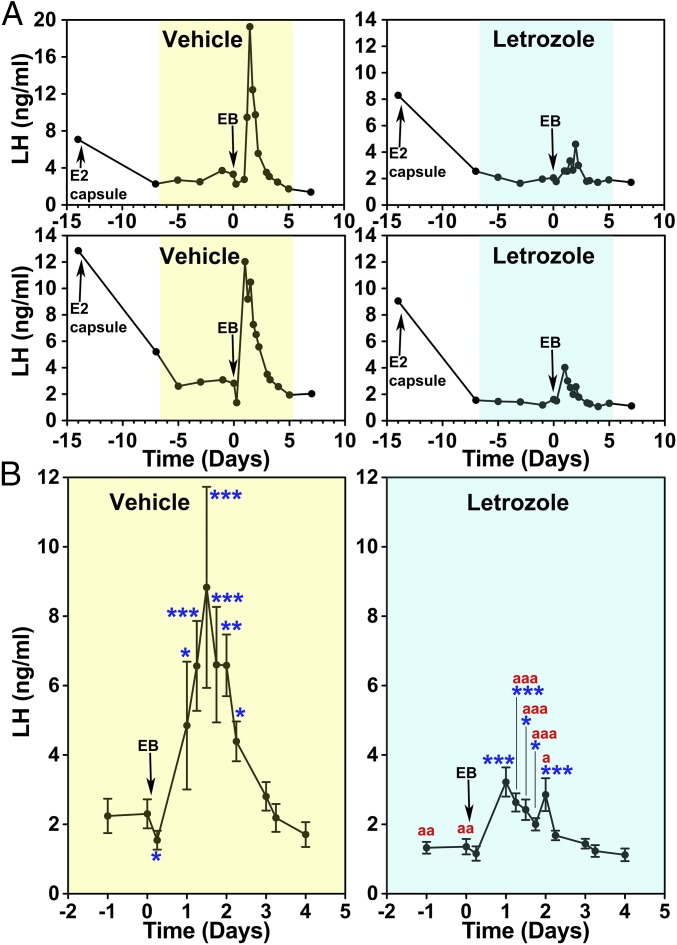Fig. 1.
Letrozole attenuated the EB-induced LH surge in OVX female monkeys. (A) Changes in LH release from two examples in each (vehicle- and letrozole-treated groups shown in yellow and blue, respectively) during the entire course of the experiment and (B) group data (mean ± SEM) highlighting the EB-induced LH surge are shown. All animals were implanted with capsules containing estradiol (E2) on day −14 and received EB injection on day 0. In both groups, E2 capsule lowered LH levels, similar to those during the early follicular phase. Analysis indicated that EB induced significant LH elevations over baseline LH levels before EB injection in both vehicle (n = 5)- and letrozole (n = 5)-treated animals (for both P < 0.001) and that the EB-induced LH surge with letrozole was significantly (P < 0.001) smaller than that with vehicle. Bonferroni post hoc analysis indicated that the LH levels in the vehicle group measured at day 0.25 were significantly (*P < 0.05) lower than before EB and LH levels at days 1, 1.25, 1.5, 1.75, 2, and 2.25 were (*P < 0.05, **P < 0.01, and ***P < 0.001) significantly higher than before EB treatment. Similarly, LH levels in the letrozole-treated group at days 1, 1.25, 1.5, 1.75, and 2 were (*P < 0.05 and ***P < 0.001) higher than before treatment. Importantly, LH levels on days −3, −1, 0, 1.25, 1.5, 1.75, and 2 in the letrozole treatment were significantly (aP < 0.5, aaP < 0.01, and aaaP < 0.001) lower than those in the vehicle group.

